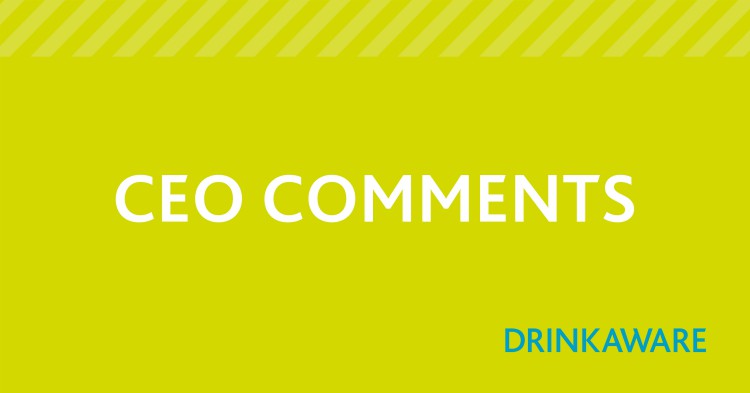“Behaviour is a critical part of health… and to mitigate risky behaviour we need to understand what is driving people’s decisions”, so started the Behavioural Insights Team’s Ed Flahavan presentation on “Applying behavioural insights to reduce harmful drinking”.
Last month’s inaugural Research Breakfast Briefing, kick starts our series of data sharing and exploration events with research and evidence taking centre stage in the behaviour change and public health debate.
Having conducted a literature review and also evaluated Drinkaware’s resources regarding their behaviour change credibility and likely efficacy, Ed walked attendees through an interactive presentation on theory, practice and its application to reducing alcohol misuse.
The provocative title of one slide was “What’s covered in the media doesn’t always help”: Ed’s referral to how research and figures are often translated by the media into stories that do not necessarily cover the whole context, certainly resonates regarding alcohol.
But to be fair it’s a rareity that a single set of data can tell a whole story – “Facts can be difficult to cleanly communicate” and the worry then is what’s the message that the public consume?
We’ve always said change must feel advantageous and viable, and Ed’s presentation asked what is also a key question for Drinkaware, “What should risk communication look like?” His contention is that a binary (either or) message will incur a ‘what the hell effect’ and tiering the risk should be preferable. But this is difficult in the public health space, where the harms can be so severe they merit communication, but that in itself may produce the opposite of the desired effect and behaviour.
The creating and embedding social norms discussions were particularly interesting, and how social commitment and social support can really help people to stick to their goals. The gap described between intention and action is where much of Drinkaware’s resources resides. How we use our cups and calculators to enable and empower people to cut out or cut back on their drinking. It was good to hear that a lot of these resources are in keeping with the Behaviour Insights Team’s behaviour change frameworks… Easy, attractive, timely and social.
The presentation’s point that you have to appeal to “heart, head and hands” neatly describes the need for multi-faceted preventions/interventions as neither policy or information is a silver bullet. Having harm-related information on labels, communicating the low risk guidelines (which currently are only known by 2% of the population – Drinkaware Index 2019), and having accessible tools – calculators, measures, planners, tips – can accumulatively contribute to a larger shift in behaviour than one element alone.
Hard policy levers, like the Public Health Alcohol Act, can have the greatest effect, but couple them with the power of collective thinking and action – as reflected in Ed’s “bundle insights for behaviour change” and their effect can be significantly amplified.


